CHARLES DARWIN in VDL (Tasmania)
Darwin Bicentenary 2009
In this bicentenary of Charles Darwin's birth, a constant stream of media articles, documentaries, publications, exhibitions and interviews with experts and descendants throw further light on Darwin's legacy.
When Darwin visited Hobart, Van Diemen's Land on board the Beagle in February 1836, he stayed at Secheron House, Battery Point and walked to the summit of kunanyi/Mt. Wellington. In this extract from his journal, he expressed amazement at the Tasmanian ferns he encountered on his walk around kunanyi/Mount Wellington:
In some of the dampest ravines, tree-ferns flourished in an extraordinary manner; I saw one which must have been at least twenty feet high to the base of the fronds, and was in girth exactly six feet. The fronds forming the most elegant parasols, produced a gloomy shade, like that of the first hour of the night.

Darwin in 1840. Watercolour by George Richmond.
Reproduced courtesy of the Darwin Heirlooms Trust.
https://darwin-online.org.uk/timeline.html
Below is an extract from Chapter XIX of Charles Darwin's Journal of researches into the geology and natural history of the various countries visited by H.M.S. Beagle (London : H. Colburn, 1839) in which he gives an account of his visit to Hobart, Van Diemen's Land, February 1836:
Extract from Chapter XIX:
"The Beagle stayed here ten days, and in this time I made several pleasant little excursions, chiefly with the object of examining the geological structure of the immediate neighbourhood.[end of extract]
The main points of interest consist, first in some highly fossiliferous strata, belonging to the Devonian or Carboniferous period; secondly, in proofs of a late small rise of the land; and lastly, in a solitary and superficial patch of yellowish limestone or travertin, which contains numerous impressions of leaves of trees, together with land-shells, not now existing. It is not improbable that this one small quarry includes the only remaining record of the vegetation of Van Diemen's Land during one former epoch.
The climate here is damper than in New South Wales, and hence the land is more fertile. Agriculture flourishes; the cultivated fields look well, and the gardens abound with thriving vegetables and fruit-trees. Some of the farmhouses, situated in retired spots, had a very attractive appearance. The general aspect of the vegetation is similar to that of Australia; perhaps it is a little more green and cheerful; and the pasture between the trees rather more abundant.
One day I took a long walk on the side of the bay opposite to the town: I crossed in a steamboat, two of which are constantly plying backwards and forwards. The machinery of one of these vessels was entirely manufactured in this colony, which, from its very foundation, then numbered only three and thirty years! Another day I ascended Mount Wellington; I took with me a guide, for I failed in a first attempt, from the thickness of the wood. Our guide, however, was a stupid fellow, and conducted us to the southern and damp side of the mountain, where the vegetation was very luxuriant; and where the labour of the ascent, from the number of rotten trunks, was almost as great as on a mountain in Tierra del Fuego or in Chiloe. It cost us five and a half hours of hard climbing before we reached the summit. In many parts the Eucalypti grew to a great size, and composed a noble forest.
In some of the dampest ravines, tree- ferns flourished in an extraordinary manner; I saw one which must have been at least twenty feet high to the base of the fronds, and was in girth exactly six feet. The fronds forming the most elegant parasols, produced a gloomy shade, like that of the first hour of the night.
The summit of the mountain is broad and flat, and is composed of huge angular masses of naked greenstone. Its elevation is 3100 feet above the level of the sea. The day was splendidly clear, and we enjoyed a most extensive view; to the north, the country appeared a mass of wooded mountains, of about the same height with that on which we were standing, and with an equally tame outline: to the south the broken land and water, forming many intricate bays, was mapped with clearness before us. After staying some hours on the summit, we found a better way to descend, but did not reach the Beagle till eight o'clock, after a severe day's work. (Feb. 6, 1836: pp 486-7) "
Thomas Nevin's Ferns
Charles Darwin's astonishment at the magnificence of these ferns was repeated by professional photographers working in Tasmania between 1860 to 1880 in endless variations. Ferns laden with snow was a particularly popular image. The large collection of stereographs by Thomas J. Nevin held at the Tasmanian Museum and Art Gallery includes these examples taken around Kangaroo Valley and the foothills of kunanyi/Mt. Wellington from the late 1860s to early 1870s:

Ferns
Stereograph in buff mount by Thomas J. Nevin late 1860s
TMAG Ref: q16826.30.1
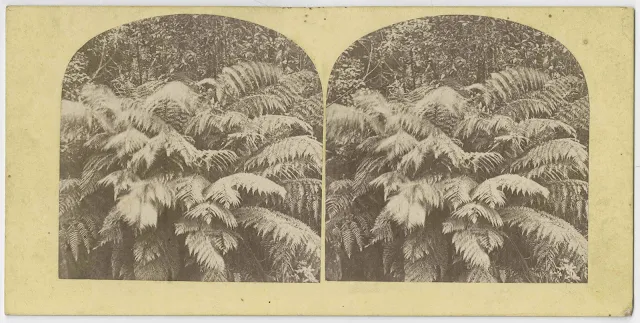
Ferns laden with snow
Stereograph in buff mount by Thomas J. Nevin late 1860s
TMAG Ref: q16826.31.1

Young ferns
Stereograph in buff mount by Thomas J. Nevin late1860s
TMAG Ref: q16826.31.2
Darwin on convicts
ABC radio interview with Darwin descendants:
Source: ABC Radio National Science Show
EXCERPT
Chris Darwin: I have read Voyage of The Beagle cover to cover. It actually is a good read as well. But as for all the other ones, no.
Robyn Williams: Do you know anything about his politics? Was he a Whig or was he a Tory?
Chris Darwin: That's a good question. I'm going to go for Whig but I'm only guessing.
Robyn Williams: He is a bit Whiggish, but of course there's a slightly dark side where they talk about social Darwinism as if only the elite should pass muster and the rest can really go to the wall, and eugenics, which was a bit of a mistake in the middle of the 20th century, which seemed in some people's ideas...like, Julian Huxley, of all people, a very liberal person, who was head of the British eugenics movement. So there were some things that applied Darwin's ideas which were, as I say, on the dark side. But as for his actual politics...
Chris Darwin: I think you're probably onto something. I think we can't be too unfair on him, Charlie, because he was a man of his day. But suddenly...when you read about what he said in Australia, for example. Have you got some quotes? There are some pretty frightening quotes which I'd prefer not to be read out loud, but I think it does show that he was not of the view that...there was a view in those days that if you were from the criminal class, that was pretty much where you were going to stay. And then suddenly he came to Australia and found all these people who had been criminals ten years ago were land owners, large tracts of land, and he found it a bit shocking I think.
More: Listen to interview and read the full transcript ...
Darwin Exhibition at the NMA
A large Darwin exhibition was held at the National Museum of Australia from 10 December 2008 to 29 March 2009. This is an extract from their web page:
Charles Darwin must surely stand as one of the most influential figures of the past 200 years. His theory of evolution is popularly accepted as explaining the origin and forms of modern life on Earth. In 2009 the world celebrated the 200th birthday of this great thinker. It also celebrated the 150th anniversary of the publication of his landmark work On the Origin of Species by Means of Natural Selection, or the Preservation of Favoured Races in the Struggle for Life.
The National Museum of Australia was proud to mark this international celebratory year by hosting a major exhibition, Darwin, developed by the American Museum of Natural History, and its own accompanying exhibition, Darwin and Australia.Read more here: Exhibition at the National Museum of Australia, Canberra

Darwin Exhibition Catalogue NMA 2009
Photo copyright © KLW NFC Imprint 2009 ARR















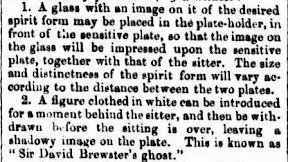















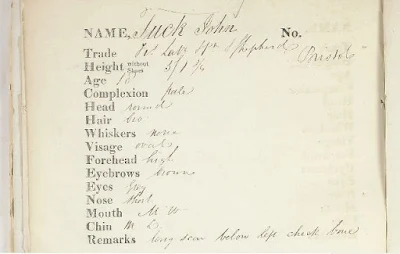




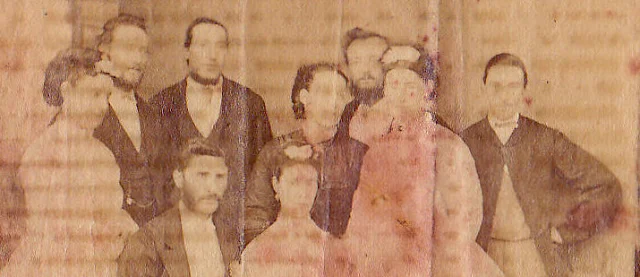



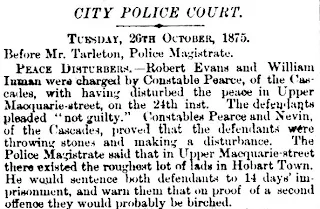



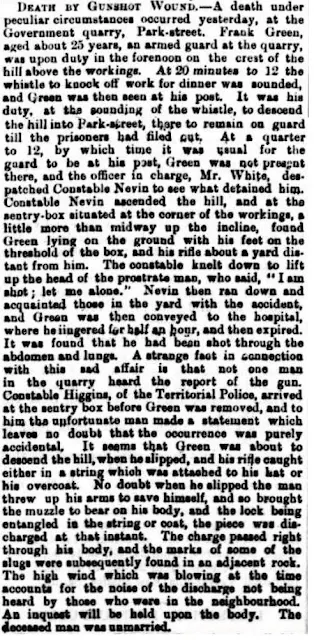



.jpg)



